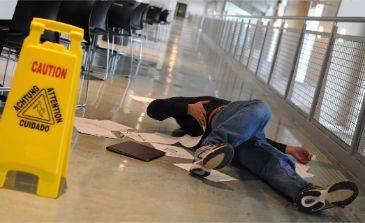Personal injury cases hinge on the legal concept of negligence. Negligence is a failure to take reasonable care, which leads to damage or injury to another party. In Colorado, personal injury cases are evaluated based on the concept of “contributory negligence.” This concept comes into play in many personal injury cases when both parties held some percentage of the responsibility for what occurred. In Colorado, it is common for a personal injury lawsuit to be answered by a countersuit claiming contributory negligence as a defense. But how does this work in real life?
How Does Comparative Negligence Work?
 One example of how this legal concept applies is as follows: A pedestrian is hit by a vehicle moving faster than the posted speed limit. However, the pedestrian did not check for moving traffic before stepping into the street or chose to run across the street when the “don’t walk” sign was illuminated. In this case, both the driver and the pedestrian acted in a negligent manner. The amount of compensation is reduced by the percentage of negligence assigned to the pedestrian. If the damages amounted to $100,000 and the pedestrian is assigned 30 percent of the fault, the compensation is reduced by that percentage, and paid at $70,000.
One example of how this legal concept applies is as follows: A pedestrian is hit by a vehicle moving faster than the posted speed limit. However, the pedestrian did not check for moving traffic before stepping into the street or chose to run across the street when the “don’t walk” sign was illuminated. In this case, both the driver and the pedestrian acted in a negligent manner. The amount of compensation is reduced by the percentage of negligence assigned to the pedestrian. If the damages amounted to $100,000 and the pedestrian is assigned 30 percent of the fault, the compensation is reduced by that percentage, and paid at $70,000.
A Countersuit for Contributory Negligence
In this example, when a countersuit claiming contributory negligence has been filed, the burden of proof lies with the plaintiff (the person bringing the countersuit). The evidence could include eyewitness testimony or video footage revealing the actions of the pedestrian before the impact occurred.
Slip and Fall Accidents and Contributory Negligence
Colorado’s contributory negligence laws could also affect a slip and fall injury case. A property owner is required to keep the premises reasonably safe for visitors who are legally present on the property. If a person slips and falls in an area with visibly posted warnings, the likelihood of recovering compensation is low. However, if the liquid or oily spill had spread to a point where the warnings were insufficient, or the slippery walking surfaces had been present for an extended period, and the property owner had failed to correct the problem within a reasonable amount of time, the case may have merit.
Get the Facts from a Personal Injury Lawyer.
The first step in determining whether a case could be successful is a full evaluation of the facts. At The Bussey Law Firm, we are proud to have garnered a reputation for excellence in personal injury law. Our founding attorney, Tim Bussey, is a talented trial lawyer and litigator who has achieved a remarkable level of success in Colorado civil court. You can be confident that when represented by his firm, you will be under the care of one of the most acclaimed law firms in Colorado Springs. The first step is a free case evaluation to find out how contributory negligence could impact the outcome of your claim or lawsuit. Even if you hold some level of responsibility for what occurred, with the right lawyer, your case could be successful. Careful and thorough investigations, gathering and preserving all relevant evidence, case development, and a persuasive presentation in court are all critical points in a favorable case outcome. It starts with a call to us.
